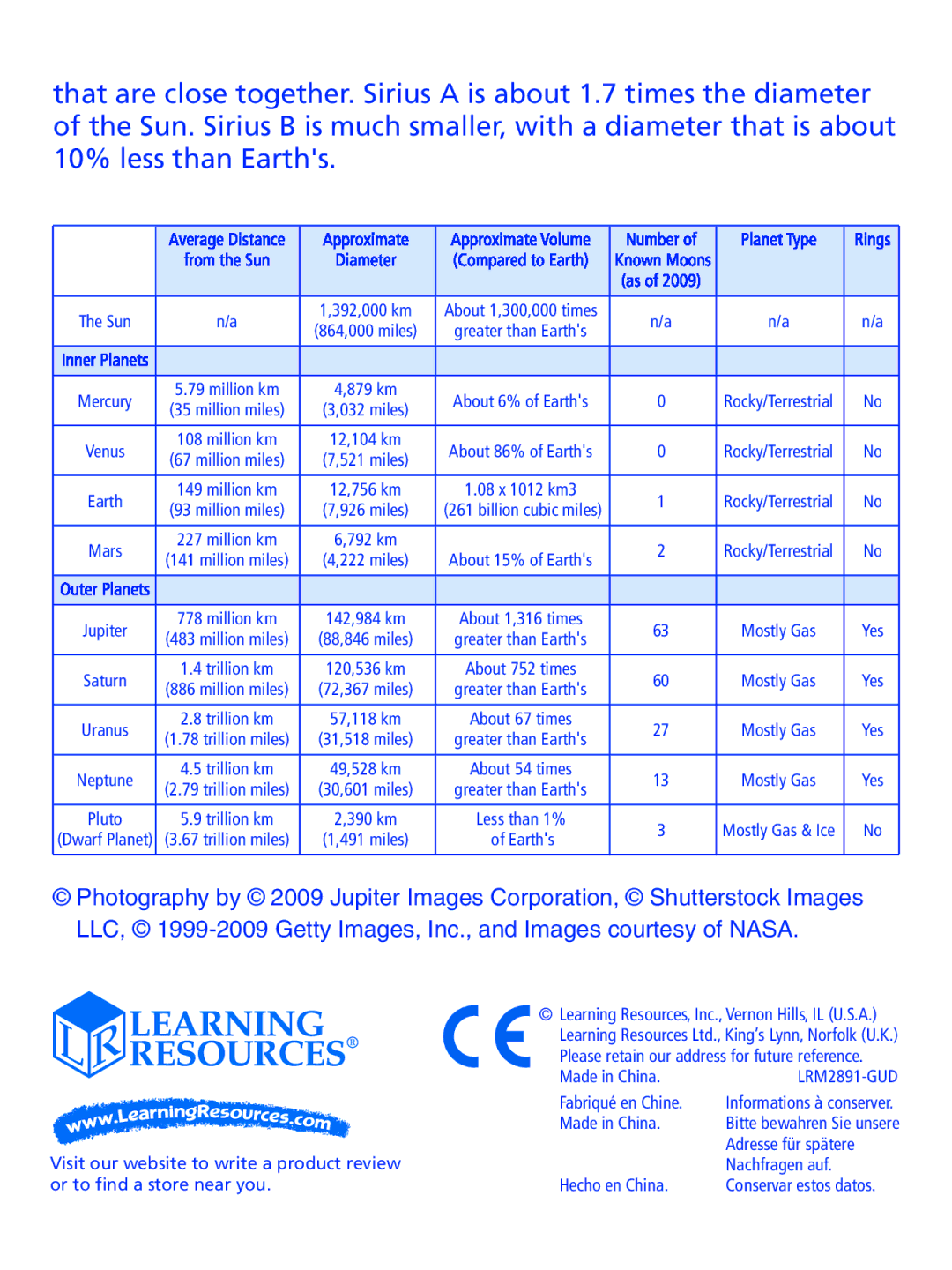LER 2891 specifications
Learning Resources LER 2891 is a highly regarded educational tool designed to enhance early learning experiences for children. This innovative resource combines engaging play with essential learning concepts, making it a favorite among educators and parents alike.One of the standout features of the LER 2891 is its focus on sensory learning. The product is designed with various textures and colors that captivate young learners, encouraging them to explore and interact with the materials. This multisensory approach not only keeps children engaged but also fosters their critical thinking and problem-solving skills as they manipulate the items.
The LER 2891 is equipped with various interactive components that facilitate learning in various areas, including math, literacy, and social skills. Through its hands-on activities, children can practice counting, sorting, and recognizing shapes and colors. This tactile engagement is particularly beneficial for kinesthetic learners who thrive on physical activity and movement in their learning processes.
Another notable characteristic is its durability and safety. Made from non-toxic, high-quality materials, the LER 2891 is built to withstand the rigors of active play. Parents can have peace of mind knowing that the product is safe for their children. Additionally, its design is user-friendly, allowing children to explore independently or with minimal supervision.
The versatility of the LER 2891 is another strong suit. It can be used in various educational settings, including classrooms, daycare centers, or at home. This adaptability makes it an excellent resource for a range of age groups, introducing children to fundamental concepts while also encouraging cooperative play among peers.
Technology also plays a role in the LER 2891's effectiveness. While it primarily focuses on traditional learning methods, it can be incorporated with modern teaching techniques, including digital learning tools. This combination of traditional activities with technology creates a balanced learning environment that prepares children for the digital age while still valuing hands-on experiences.
In summary, Learning Resources LER 2891 is a multifunctional and engaging educational resource that promotes sensory learning, safety, and versatility. With its blend of tactile elements and educational value, it serves as an excellent foundation for children's early learning experiences, paving the way for a lifetime of curiosity and discovery.

